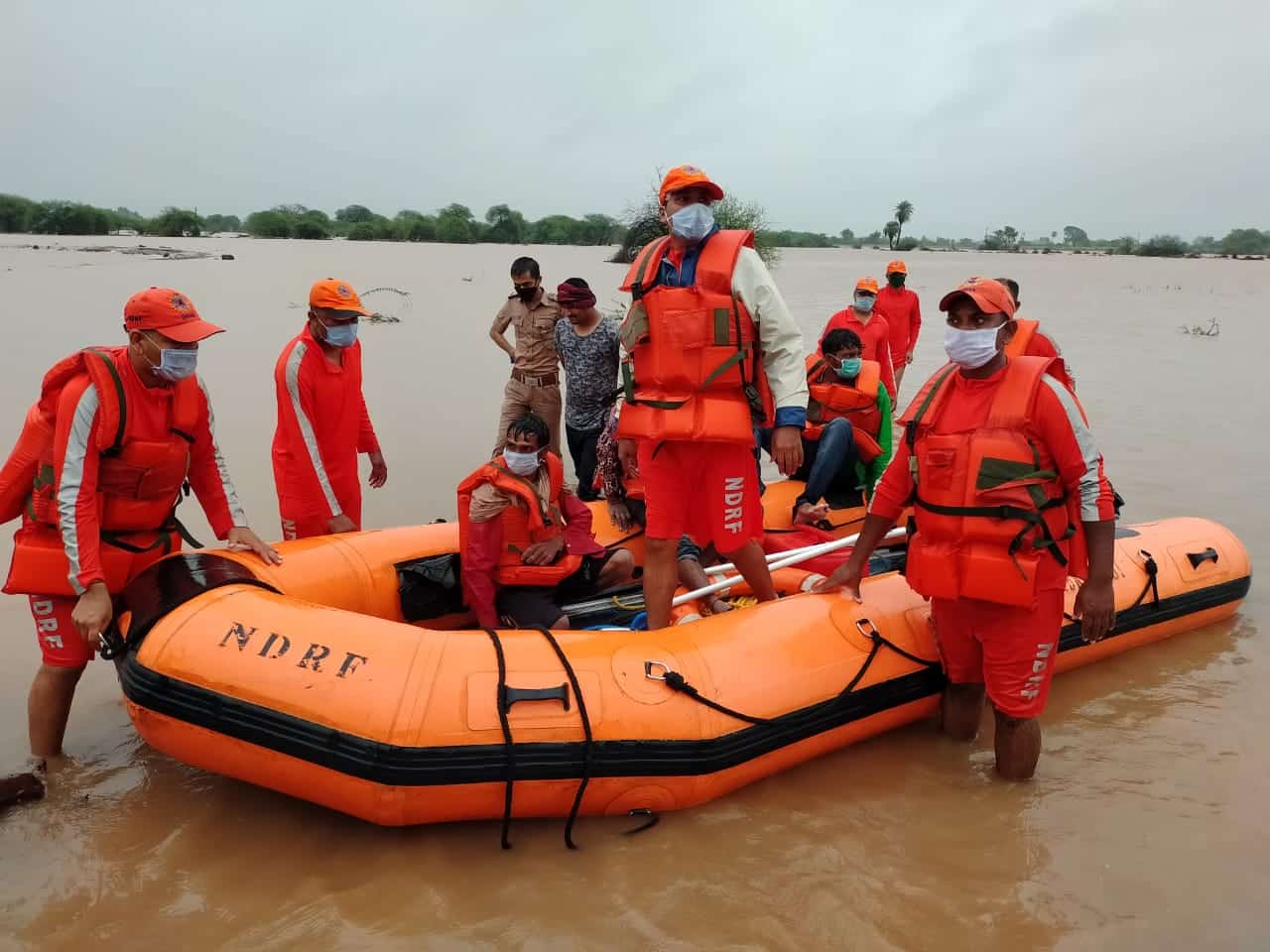About National Disaster Response Fund (NDRF)
- It is defined in Section 46 of the Disaster Management Act, 2005.
- It is a fund managed by the Central Government to meet the expenses for emergency response, relief, and rehabilitation due to any threatening disaster situation or disaster.
- NDRF is constituted to supplement the funds of the State Disaster Response Funds (SDRF) in case of a disaster of severe nature, provided adequate funds are not available in SDRF.
- It is placed in the “Public Account” of the GOI under “reserve funds not bearing interest”. Since it is placed in the public accounts, the government does not require parliamentary approval to take money out of this fund.
- Eligibility:
- NDRF guidelines state that natural calamities of cyclones, drought, earthquake, fire, flood, tsunami, hailstorm, landslide, avalanche, cloud burst, pest attack, and cold wave and frost considered to be of severe nature by the Government of India (GoI) and requiring expenditures by a state government in excess of the balances available in its own SDRF will qualify for immediate relief assistance from NDRF.
- The NDRF also covers man-made disasters such as terrorist attacks, chemical or biological disasters, or nuclear disasters as notified by the Central Government.
- For availing the NDRF funds, states are required to submit a memorandum indicating the sector-wise damage and need for funds. The Centre, on its part, assesses the damage and grants the additional funds to states.
- The financial assistance from NDRF is for providing immediate relief and is not compensation for loss/damage to properties /crops. In other words, the NDRF amount can be spent only towards meeting the expenses for emergency response, relief, and rehabilitation.
- The NDRF is not used for disaster preparedness, restoration, reconstruction, and mitigation. These activities are funded by other schemes such as the National Disaster Mitigation Fund (NDMF), the National Cyclone Risk Mitigation Project (NCRMP), National Flood Management Programme (NFMP), etc.
- Sources of Financing NDRF:
- It is financed through the levy of a cess on certain items, chargeable to excise and customs duty, and approved annually through the Finance Bill.
- The requirement for funds beyond what is available under the NDRF is met through general budgetary resources.
- The National Executive Committee (NEC) of the National Disaster Management Authority takes decisions on the expenses from NDRF.
- The NDRF accounts are audited by the Comptroller and Auditor General (CAG) every year.
Q1) What is the National Disaster Management Authority (NDMA)?
NDMA is the apex body for Disaster Management in India and is headed by the Prime Minister of India. Setting up of NDMA and the creation of an enabling environment for institutional mechanisms at the State and District levels is mandated by the Disaster Management Act, 2005. NDMA is mandated to lay down the policies, plans and guidelines for Disaster Management.
Source: Karnataka Approaches Supreme Court Over Funds For Drought Management
Last updated on December, 2025
→ Check out the latest UPSC Syllabus 2026 here.
→ Join Vajiram & Ravi’s Interview Guidance Programme for expert help to crack your final UPSC stage.
→ UPSC Mains Result 2025 is now out.
→ UPSC Notification 2026 is scheduled to be released on January 14, 2026.
→ UPSC Calendar 2026 is released on 15th May, 2025.
→ The UPSC Vacancy 2025 were released 1129, out of which 979 were for UPSC CSE and remaining 150 are for UPSC IFoS.
→ UPSC Prelims 2026 will be conducted on 24th May, 2026 & UPSC Mains 2026 will be conducted on 21st August 2026.
→ The UPSC Selection Process is of 3 stages-Prelims, Mains and Interview.
→ UPSC Result 2024 is released with latest UPSC Marksheet 2024. Check Now!
→ UPSC Prelims Result 2025 is out now for the CSE held on 25 May 2025.
→ UPSC Toppers List 2024 is released now. Shakti Dubey is UPSC AIR 1 2024 Topper.
→ UPSC Prelims Question Paper 2025 and Unofficial Prelims Answer Key 2025 are available now.
→ UPSC Mains Question Paper 2025 is out for Essay, GS 1, 2, 3 & GS 4.
→ UPSC Mains Indian Language Question Paper 2025 is now out.
→ UPSC Mains Optional Question Paper 2025 is now out.
→ Also check Best IAS Coaching in Delhi

















